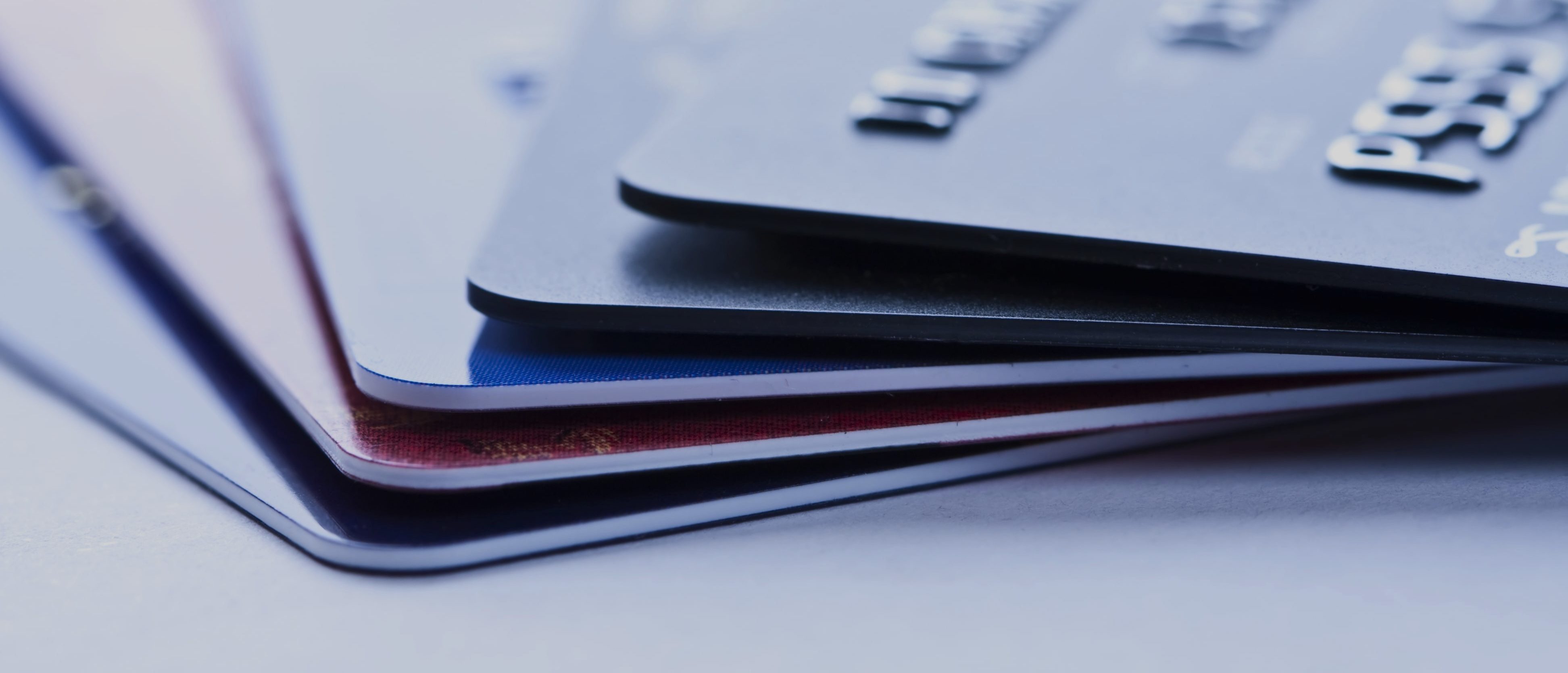

Finance
Chase Credit Card: How To Increase Limit
Modified: January 15, 2024
Learn how to increase your Chase credit card limit and manage your finances effectively. Get expert tips and guidance on maximizing your credit limit for better financial flexibility.
(Many of the links in this article redirect to a specific reviewed product. Your purchase of these products through affiliate links helps to generate commission for LiveWell, at no extra cost. Learn more)
Table of Contents
- Introduction
- Understanding Credit Card Limits
- Benefits of Increasing Your Chase Credit Card Limit
- Factors That Affect Your Credit Card Limit
- How to Request a Credit Limit Increase with Chase
- Tips for Increasing Your Chase Credit Card Limit
- Common Mistakes to Avoid when Requesting a Credit Limit Increase
- Frequently Asked Questions (FAQs)
- Conclusion
Introduction
Having a credit card is a convenient way to manage your finances and make purchases. It provides you with the freedom to make transactions without carrying cash and offers a range of benefits and rewards. One important aspect of using a credit card is understanding and managing your credit card limit.
Your credit card limit is the maximum amount that you can borrow from your credit card issuer. It represents the line of credit extended to you, and it is important to use it wisely. While every credit card comes with a predetermined limit, there are ways to increase your credit card limit, including with Chase credit cards.
In this article, we will explore how to increase your Chase credit card limit, the benefits of doing so, the factors that affect your credit card limit, and valuable tips for successfully requesting a credit limit increase. We will also discuss common mistakes to avoid during the process.
Understanding how to increase your Chase credit card limit is crucial for maximizing the advantages of your credit card. A higher credit limit can provide you with more purchasing power and flexibility while improving your credit score. So, let’s dive into the details and discover how you can unlock the potential of your Chase credit card by increasing your credit card limit.
Understanding Credit Card Limits
Before delving into how to increase your Chase credit card limit, it’s important to understand what a credit card limit is and how it affects your financial management. Your credit card limit is the maximum amount of money that your card issuer allows you to borrow on your credit card.
The credit card limit is determined by various factors, including your credit score, income, credit history, and the credit card issuer’s policies. When you are approved for a credit card, the issuer assesses your creditworthiness and assigns a credit limit. This limit acts as a safety net for the issuer and a spending boundary for you.
It’s crucial to note that your credit card limit does not represent your available cash or the amount you can afford to spend. It is simply the maximum amount you can borrow on your credit card. It is in your best interest to use your credit card responsibly and not exceed the credit limit, as it can result in fees, penalties, and damage to your credit score.
Monitoring and managing your credit card limits are essential for maintaining a healthy credit profile. Striving to keep your credit utilization ratio (the percentage of your credit limit that you are using at any given time) below 30% can positively impact your credit score. For example, if your credit card limit is $10,000, it is advisable to keep your outstanding balance below $3,000.
Understanding your credit card limit is the first step towards responsible credit card usage. In the following sections, we will explore the benefits of increasing your Chase credit card limit, the factors influencing it, and the steps to request a credit limit increase.
Benefits of Increasing Your Chase Credit Card Limit
Increasing your Chase credit card limit can offer a range of benefits and financial advantages. Let’s explore some of the key benefits:
1. Improved Purchasing Power: By increasing your credit card limit, you have more flexibility to make larger purchases or handle unexpected expenses without maxing out your card. It provides you with greater purchasing power to accommodate your needs. 2. Enhanced Credit Utilization Ratio: Your credit utilization ratio is an important factor in determining your credit score. By increasing your credit card limit, you can lower your credit utilization ratio, which can positively impact your creditworthiness and help improve your credit score. 3. Emergency Preparedness: Having a higher credit card limit can provide you with a safety net during emergencies. Whether it’s a medical expense or a car repair, having a higher credit limit can offer you the financial cushion you need in times of unexpected expenses. 4. Rewards and Perks: Many Chase credit cards offer attractive rewards programs and perks such as cashback, travel rewards, or airline miles. By increasing your credit card limit, you can take full advantage of these rewards, earning more benefits with your increased spending power. 5. Flexibility and Convenience: A higher credit card limit provides you with more flexibility in managing your finances. It allows you to make larger transactions, such as booking travel accommodations or making significant purchases, without the hassle of multiple payments or seeking alternative payment methods. 6. Building Credit History: By responsibly utilizing your increased credit limit, you can build a strong credit history over time. Timely payments and maintaining a low credit utilization ratio demonstrate your creditworthiness and responsible financial management, which can open doors to better financing options in the future. 7. Negotiating Power: A higher credit card limit gives you leverage when negotiating with lenders or seeking credit extensions. It demonstrates your financial stability and strengthens your position when applying for loans or other forms of credit. 8. Financial Confidence: Increasing your credit card limit can boost your financial confidence, knowing that you have a higher borrowing capacity if needed. It provides peace of mind and a sense of security, allowing you to focus on other financial goals and aspirations. Ultimately, increasing your Chase credit card limit can provide you with numerous advantages, from greater financial flexibility to improved creditworthiness. However, it’s important to understand that increasing your credit card limit also requires responsible financial management to avoid overspending and accumulating unnecessary debt.
Factors That Affect Your Credit Card Limit
When it comes to determining your credit card limit, several factors come into play. Credit card issuers, like Chase, consider various aspects of your financial profile to assess your creditworthiness and determine an appropriate credit limit. Here are some key factors that can influence your credit card limit:
1. Credit Score: Your credit score plays a significant role in determining your credit card limit. A higher credit score, indicating a history of responsible credit management, suggests that you are a low-risk borrower. This can increase your chances of being approved for a higher credit limit. 2. Income: Your income level is an important consideration for credit card issuers. A higher income indicates a greater ability to repay debts, which can lead to a higher credit card limit. However, this may vary depending on the specific credit card and issuer. 3. Credit History: Your credit history, including the length of your credit accounts, payment history, and any negative marks, is taken into account. A longer and positive credit history can reflect your creditworthiness and increase the likelihood of a higher credit limit. 4. Debt-to-Income Ratio: Lenders evaluate your debt-to-income ratio, which compares your monthly debt obligations to your income. A lower debt-to-income ratio indicates a lower level of financial strain and a higher capacity to handle credit, increasing the likelihood of a higher credit card limit. 5. Payment History: Your track record of making payments on time influences your credit card limit. Consistent, timely payments demonstrate responsible credit management and can lead to a higher credit card limit over time. 6. Utilization Ratio: Your credit utilization ratio, which is the percentage of your credit limit that you are using, is crucial. Keeping your utilization ratio low (below 30%) indicates responsible credit usage and can positively impact your credit card limit. 7. Employment Stability: Your employment history and stability can play a role in determining your credit card limit. A stable job with a reliable income source can signal financial stability, increasing the chances of a higher credit limit. It’s important to note that each credit card issuer, including Chase, may have its own specific criteria for determining credit limits. Additionally, different credit cards within the same issuer may offer different credit limits based on their specific features and target demographics. Understanding the factors that affect your credit card limit can help you take proactive steps to improve your creditworthiness and increase the likelihood of a higher credit limit. By managing these factors effectively, you can work towards securing a credit card limit that aligns with your financial needs and goals.
How to Request a Credit Limit Increase with Chase
If you are interested in increasing your credit card limit with Chase, you have a few options to explore. Follow these steps to request a credit limit increase:
1. Check Your Eligibility: Before requesting a credit limit increase, assess your eligibility by reviewing your credit profile. Check if your credit score has improved, your payment history is strong, and your income has increased. These factors can increase your chances of approval. 2. Contact Chase: Reach out to Chase customer service through the phone number on the back of your credit card or access your account online to explore your credit limit increase options. Alternatively, you can send a secure message through your online account. 3. Provide Updated Information: If requested, be prepared to provide updated information about your income, employment, and other financial details. This information helps the issuer assess your eligibility for a credit limit increase. 4. Explain Your Reason: When speaking to a representative or submitting a request online, communicate why you are requesting a credit limit increase. Whether it’s to accommodate upcoming large expenses or improve your credit utilization ratio, providing a clear explanation can strengthen your case. 5. Be Prepared for a Credit Check: Some credit limit increase requests may require a hard credit inquiry, which can temporarily lower your credit score. Confirm with Chase if a credit check will be performed during the process. 6. Consider a Balance Transfer: If you have a substantial outstanding balance on your current credit card, you may want to consider a balance transfer to a new Chase card with a higher credit limit. This can help consolidate your debt and potentially increase your credit limit. 7. Follow Up: If your initial request is not approved, consider following up with Chase to understand the reasons for the denial. Take necessary steps to address any issues and improve your creditworthiness before requesting a credit limit increase again. Remember to approach credit limit increases responsibly. A higher credit limit can provide financial flexibility, but it’s important to avoid excessive debt and manage your spending wisely. Lastly, note that Chase’s credit limit increase policies may vary depending on the specific credit card and your individual circumstances. Contact Chase directly or refer to their website for the most up-to-date information regarding credit limit increase requests.
Tips for Increasing Your Chase Credit Card Limit
If you’re looking to increase your Chase credit card limit, here are some valuable tips that can help improve your chances of success:
1. Maintain a Good Credit Score: A strong credit score is crucial when requesting a credit limit increase. Make sure to pay your bills on time, keep your utilization ratio low, and avoid any negative marks on your credit report. This demonstrates responsible credit management and increases your chances of approval. 2. Use Your Card Regularly: Utilize your Chase credit card regularly and make timely payments. Active usage and consistent repayment create a positive payment history, showing Chase that you are a reliable credit user. 3. Pay More than the Minimum Payment: Whenever possible, pay more than the minimum payment due on your credit card. This shows responsible financial behavior and indicates that you can handle a higher credit limit. 4. Update Your Account Information: Keep your account information, such as your income and employment status, updated with Chase. An increase in income or a change in employment can be favorable factors when requesting a higher credit limit. 5. Pay Down Existing Debt: Lowering your existing credit card balance can improve your credit utilization ratio and demonstrate responsible debt management. Prioritize paying down any outstanding balances you have before requesting a credit limit increase. 6. Build a Relationship with Chase: Longevity with Chase can be beneficial when requesting a credit limit increase. Maintain a positive relationship with the bank by using your Chase credit card consistently and responsibly over an extended period. 7. Consider Multiple Credit Cards: If you have multiple Chase credit cards, evenly distribute your spending across all of them. This can help show responsible usage and increase your overall creditworthiness. 8. Be Patient: Building a strong credit profile and obtaining a higher credit limit takes time. Continuously work on maintaining good credit habits and regularly check your eligibility for a limit increase. Remember, while these tips can improve your chances, credit limit increases are not guaranteed. Chase will evaluate your request based on their criteria and your creditworthiness. It’s essential to manage your credit responsibly and avoid any excessive spending or debt accumulation.
Common Mistakes to Avoid when Requesting a Credit Limit Increase
When requesting a credit limit increase with Chase or any credit card issuer, it’s important to be aware of common mistakes that could hinder your chances of success. Avoiding these mistakes can increase your likelihood of getting approved for a higher credit limit. Here are some common pitfalls to steer clear of:
1. Requesting Too Soon: It’s important to wait until you have built a solid credit history and established a positive relationship with the issuer before requesting a credit limit increase. Requesting too soon can be seen as risky and may result in a denial. 2. Exceeding Your Current Limit: Maxing out or consistently coming close to your current credit limit can be interpreted as risky behavior by credit card issuers. Aim to keep your credit utilization ratio below 30% to show responsible credit usage. 3. Having a Deteriorating Credit Profile: A significant decline in your credit score, a history of late payments, or accumulating excessive debt can negatively impact your chances of getting a credit limit increase. Focus on improving your credit profile before requesting an increase. 4. Inadequate Income Documentation: Failing to provide updated and accurate income information can hinder your request for a higher credit limit. Make sure to update your income details with the credit card issuer to support your request. 5. Submitting Multiple Requests Simultaneously: Sending multiple credit limit increase requests at the same time can raise red flags and make you appear financially desperate. Submitting multiple requests may lead to denials or even temporary harm to your credit score. 6. Ignoring Your Account History: Your credit card issuer analyzes your account history to evaluate your creditworthiness. Ignoring late payments, high balances, or past issues can negatively impact your chances of getting approved for a credit limit increase. 7. Being Unprepared: Not having a clear understanding of your financial situation or the reasons for requesting a credit limit increase can diminish your chances of success. Prepare your case by knowing your credit score, payment history, and income details. 8. Getting Discouraged by a Denial: If your initial request for a credit limit increase is denied, don’t get discouraged. Take the opportunity to reassess your financial standing, address any issues, and work on improving your creditworthiness before requesting again in the future. By avoiding these common mistakes, you can position yourself for a better chance of success when requesting a credit limit increase. Remember, responsible credit usage, a positive payment history, and maintaining a good credit profile are key factors in securing a higher credit limit from Chase or any credit card issuer.
Frequently Asked Questions (FAQs)
Here are some common questions regarding increasing your Chase credit card limit:
Q: How often can I request a credit limit increase with Chase?
A: Chase typically allows you to request a credit limit increase every six months. However, keep in mind that frequent credit limit increase requests can raise concerns about your financial stability, so it’s best to wait until you have a valid reason for requesting an increase.
Q: Will requesting a credit limit increase with Chase affect my credit score?
A: Requesting a credit limit increase may result in a hard inquiry on your credit report, which can have a minor negative impact on your credit score. However, the impact is usually temporary, and over time, a higher credit limit can help improve your credit utilization ratio and overall creditworthiness.
Q: How long does it take to receive a decision on a credit limit increase request?
A: The time it takes to receive a decision on a credit limit increase request can vary. In some cases, you may receive an immediate approval or denial. However, there may be instances where the issuer needs to review your request further, which could take several weeks.
Q: Can I increase the credit limit on multiple Chase credit cards?
A: Yes, you can request credit limit increases on multiple Chase credit cards. However, keep in mind that each request is evaluated independently based on the specific credit card and your creditworthiness. Therefore, it’s important to manage your credit responsibly on all of your Chase credit cards.
Q: Will a credit limit increase with Chase result in a higher annual fee?
A: Generally, increasing your credit limit with Chase does not directly affect the annual fee. However, there may be certain credit cards or circumstances where an increased credit limit could impact the annual fee structure. It is best to review the terms and conditions of your specific credit card to understand any potential fee changes.
Q: Can I request a credit limit increase if I’m a new Chase credit cardholder?
A: It’s generally advisable to wait a few months before requesting a credit limit increase as a new Chase credit cardholder. Establish a positive payment history and build a rapport with the issuer before seeking an increase. Most issuers prefer to see a track record of responsible credit usage before granting a credit limit increase.
Remember, while these answers provide general information, it’s essential to refer to Chase’s specific policies and guidelines for the most accurate and up-to-date information regarding credit limit increase requests.
Conclusion
Increasing your Chase credit card limit can offer a range of benefits and financial opportunities. By understanding credit card limits, you can make informed decisions regarding your credit usage and explore ways to expand your borrowing capacity.
We explored the importance of understanding credit card limits and the factors that influence them. By recognizing the benefits of increasing your Chase credit card limit, such as improved purchasing power, enhanced credit utilization ratio, and emergency preparedness, you can make a compelling case for a higher credit limit. We also discussed the steps to request a credit limit increase with Chase, including checking your eligibility, contacting Chase customer service, providing updated information, and explaining the reason behind your request. Additionally, we provided valuable tips for increasing your Chase credit card limit, such as maintaining a good credit score, using your card responsibly, and being patient throughout the process. It’s essential to avoid common mistakes when requesting a credit limit increase, such as requesting too soon, exceeding your current limit, or neglecting your account history. By avoiding these pitfalls, you can maximize your chances of success. Lastly, we addressed some frequently asked questions regarding increasing your Chase credit card limit. Remember to refer to Chase’s specific policies and guidelines for the most accurate information regarding credit limit increase requests, as these can vary based on individual circumstances and the specific credit card. In conclusion, by being proactive, responsible, and patient, you can successfully navigate the process of increasing your Chase credit card limit. A higher credit limit can provide you with greater financial flexibility, improved creditworthiness, and access to valuable rewards and perks. As you embark on this journey, remember to use your increased limit wisely and continue to manage your credit responsibly to strengthen your overall financial health.














